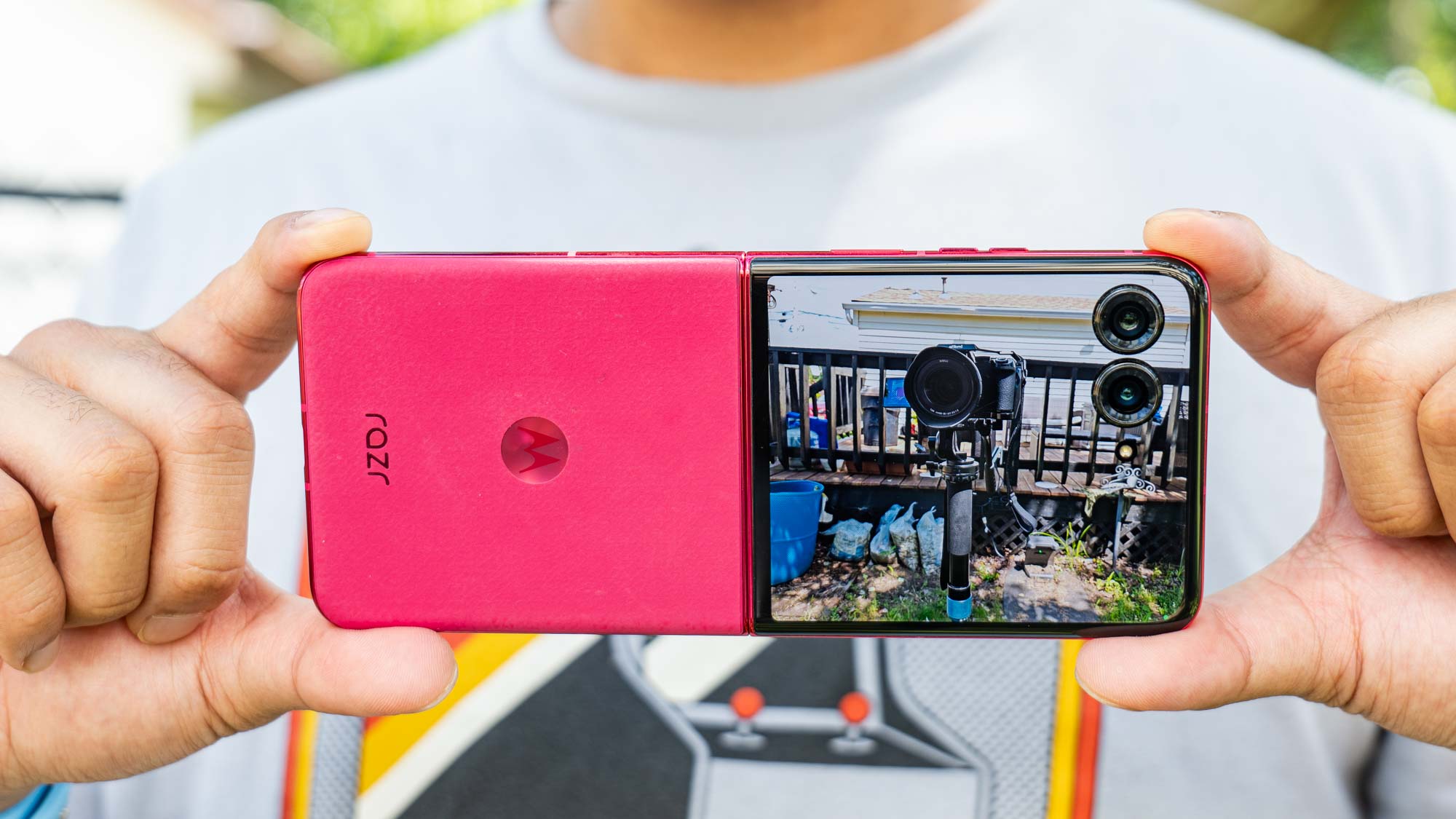Google Pixel is no longer the cheap flagship alternative — and this proves it
The era of Google being a ‘cheap’ phone brand is firmly over — here’s why

Google has long been known for offering smartphones that are cheaper than its rivals. How much cheaper always depended on the model, but if you go back to any point in the past 14 years, you’ll find that Google’s phones were considered the cheaper alternative compared to the likes of Samsung's Galaxy S devices and Apple’s iPhone.
While there were some outliers — the Nexus 6 which actually cost $50 more than that year’s iPhone 7 — you usually could get a pretty solid phone without having to pay quite as much money, even as Google’s flagships got more expensive.
But that’s changed this year. The Google Pixel 9 series has seen another price hike, bringing the cost of Google's entry-level phone in line with comparable flagships.
Pixel 9 price hikes and shrinkflation
Go back to 2022 when the Google Pixel 7 arrived: you could have picked up that phone for $599. At the time, that price was $200 less than the cheapest iPhone 14 and Samsung Galaxy S22 models. While the Pixel 7 had its fair share of problems the price definitely wasn’t one of them. The Pixel 7 Pro’s $899 price tag was quite a bit more than the standard mode, but it still got to enjoy a $100 to $200 discount compared to other Pro and Ultra-label phones of the year.
Fast forward a year when the Pixel 8 series pushed Google's prices up by $100. The Pixel 8 cost $699 compared to $999 for the Pixel 8 Pro, all while the iPhones and Galaxy S23 kept their prices more or less static. The higher-priced Pixels weren't ideal, but the Pixel 7 remained a cheaper option while also delivering a lot of big improvements.
It's now a year later, and Google's done it again.
This year, the cheapest Pixel 9 will cost $799 — $100 more than the Pixel 8 and the same price as the iPhone 15 and Galaxy S24. The Pixel 9 Pro looks like it’s the same price as last year’s Pro model, until you realize it’s not. Because this new version has a smaller screen and battery than the Pixel 8 Pro, making the Pixel 9 Pro XL the only true successor to that model.
The XL model starts at $1,099, $100 more than it would have cost to buy a Pixel 8 Pro at launch. And once a phone crosses the $1,000 barrier, the last thing you should be calling it is cheap — even if you preface the word with “relatively”.
The crazy thing is that the Pixel 9 Pro XL is still cheaper than the Samsung Galaxy S24 Ultra and iPhone 15 Pro Max — those two premium models also suffered their own price hikes. The key difference there is that Samsung and Apple also scrapped the 128GB storage option, and kept the price of a 256GB model the same as the previous year. So the starting price did go up, but it also stayed the same from a certain point of view.
The Pixel 9 Pro XL doesn’t have that advantage and has the same tired, increasingly useless 128GB storage option.
Pixels are less appealing now
There are a lot of reasons why buying a Pixel phone is a good idea. You’re first in line for all the latest Android updates, regular feature drops add more features to your phone throughout the year, and recent models offer seven years of software support — something not even Apple can claim.
We’re also expecting some of the newest AI features that debut on the Pixel 9 to be ported over to older models like the Pixel 8, giving current Pixel users the ability to enjoy what the newest phones have to offer while still hanging onto their existing device. Even if every feature doesn't migrate to last year's flagships or perform as well as it might on a Tensor G4-powered device, it’s still a great little perk.
The problem here is that a lower price was always one of the big reasons why people recommended Google’s phones. Being able to get a comparable premium phone experience to an iPhone or Samsung Galaxy without having to pay quite as much can’t be argued with — especially when you take the other Pixel perks into consideration.
Over the years other Android phone makers have caught up to what Google has to offer. Sure, nobody can compete with Google on software rollout times, but Samsung has been doing its darndest to get updates out a lot more quickly. Similarly we’ve seen other Android phones start offering longer software support, with Samsung even matching Google’s seven year pledge.
Other low-cost flagships that have popped up over the years have been making big leaps in their technology. OnePlus is a great example, since it was always considered to be a fantastic brand that was often let down by its camera performance. These days, the OnePlus 12 is one of the best camera phones, and while not quite as good as Google, Samsung and Apple flagships, it’s clear the phone maker isn’t going away anytime soon.
On top of that, Pixel phones are often rife with issues. Not just general teething problems that gather headlines right after launch, but also very inconsistent performance in many areas. Battery life has always been Google’s biggest weakness, with the Pixel 8 lasting less than 10 hours in our custom battery life test — compared to 13.5 hours for Samsung's standard Galaxy S24.
There's also the fact that Google rarely, if ever, used a flagship chipset — even before adopting the custom Tensor series. With Pixel prices going up, it makes that performance dip seem a lot less appealing. Raw performance may not be everything, and Tensor’s focus on AI optimization and security are very important, but we still wonder whether Google could have been doing a lot better if it had tried.
Bottom line
There are still reasons to like Pixel phones. The AI-centric angle Google’s been taking is going to be a very big deal going forward, and Google still offers some of the best software support of any Android device. While we haven’t done any official testing with the Pixel 9 models so far, we’ve got high hopes for the camera and picture quality.
But that higher price tag is like the elephant in the room, and it means Pixels aren’t the bargains they once were. I anything Google has handed quite a big advantage to the cheaper options. The OnePlus 12, in particular, may still cost $799, the same as a Pixel 9, but it’s also effectively the Pro model by another name — a phone comparable to much pricier rivals. So long as OnePlus can resist hiking up the price of the OnePlus 13 early next year, it could help that company capture in a few Pixel exiles that are turned off by higher Pixel 9 prices.
At least we’ll always have the A-series Pixels as a more affordable option. Or we will if Google can resist hiking up the price of the Pixel 9a when it lands next spring.
More from Tom's Guide
- Google Pixel 9 Pro XL is the only one that can take advantage of Google’s 45W charger — don’t waste your money
- The Pixel 9 Pro and 9 Pro XL are overrated — this is the Pixel I'd buy
- The Google Pixel 9 has lots of AI features — but Pixel Screenshots looks like a game changer
Sign up to get the BEST of Tom's Guide direct to your inbox.
Get instant access to breaking news, the hottest reviews, great deals and helpful tips.

Tom is the Tom's Guide's UK Phones Editor, tackling the latest smartphone news and vocally expressing his opinions about upcoming features or changes. It's long way from his days as editor of Gizmodo UK, when pretty much everything was on the table. He’s usually found trying to squeeze another giant Lego set onto the shelf, draining very large cups of coffee, or complaining about how terrible his Smart TV is.
-
Dael W Yeah. I've come to the conclusion I don't need any of the features of flagship phones anymore. I was picking Pixel's because they were a solid phone and did what I need at a reasonable price. Now, it looks like I'll be buying a mid ranger next time.Reply
I strongly disagree with 128GB storage being useless. I'm not a betting man but I'll actually put money on claiming less than 40% of flagship phone users use over 128GB and actually I think it's more like just 30%. Chat GPT backs me up on this (not the greatest source of hard facts but it's a start). You're the journo, so journalise and let us know the actual figure.
Tech journos might need more but most of us don't photograph everything they see or spend all day playing games on them. Most of us use them for communicating with each other.
Why should I have to pay for 256GB when I won't use 2/3 of it?










